Home » Xi’an » Locals’ Recommended Attractions in Xi’an
Xi’an is a world-famous ancient cultural city. From Terracotta Warriors to the Mausoleum of the First Qin Emperor, from the ancient city gate to the Big Wild Goose Pagoda, Xi’an’s ancient city scenery has charmed countless people. But in the eyes of old Xi’an locals, just visiting these Xi’an famous attractions is not enough to understand Xi’an. Only when you have been to where locals often go in their daily lives can you genuinely enter the living Xi’an.
Famous local attractions in Xi’an
#1: Xicang Antique Market (西仓集市)


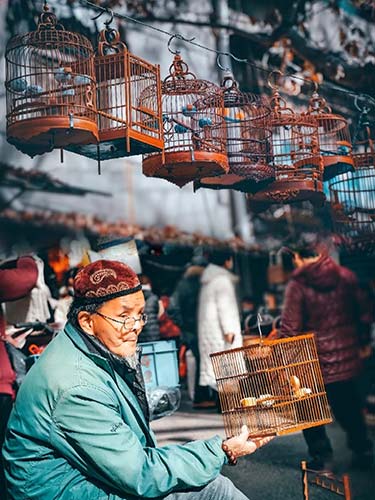
The Xicang Antique Market is not just a simple place name for old Xi’anites but an indelible city memory. It has become a very representative cultural symbol, where the human feelings about the old city, the memories of several generations, and the crisp birdsong are all interwoven in this market. Xicang Market covers antiques, snacks, vegetables, fruits, daily necessities, clothing, and old objects. It is called the “marketplace paradise” of Xi’an by old Xi’anites.
The Xicang Market is held every Thursday and Sunday. If you want to come here, you must be early, because people will close their stalls in the afternoon. The market is large enough, with the two edges of the two-meter-wide lane neatly occupied by various goods. In the beginning, the senior Xi’an people were the protagonists of the Xicang Market as they moved slowly through the streets. And nowadays, young people also like to patronize this place, panning for goods while experiencing the life of the old city.
Address: 175m eastbound at the intersection of Xicang North Lane and Xicang West Lane
#2: Sajin Bridgei (洒金桥)



Because of the wide range of regions and rich landscapes, each city in China has its unique local cuisine. When it comes to Xi’an cuisine, many first think of Huimin Street. However, if you ask Xi’an locals, the answer must be Sajin Bridge, which is not far from the Xicang Antique Market.
This 800-meter street is lined with all kinds of Xi’an food. Some are stores, and some are just roadside stalls. But you can find all types of Xi’an food here. Compared with Huimin Street, the food here tastes better, and the prices are fair.
#3: Xiangzi Temple Street (湘子庙街)



China’s provincial capitals tend to have significant foreign populations. However, Xiangzi Temple Street is one of the rare streets in Xi’an where almost all locals live, making this street very local in character. The street is named after a temple called Xiangzi Temple, which was built during the Song Dynasty(960-1279). Legend has it that it was the former residence of Han Xiangzi, one of the eight gods of ancient Chinese Taoism. Xiangzi Temple Street is a quiet street in the middle of the city, with a few unique cafes.
#4: Shuyuan Gate Pedestrian Street (书院门步行街)
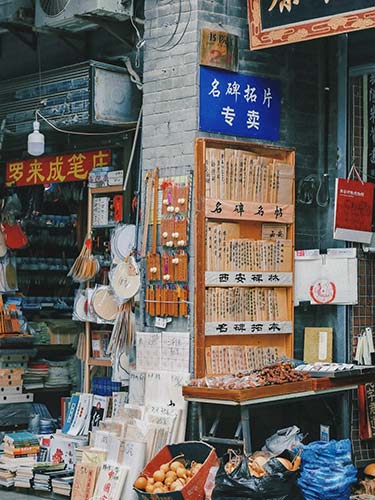
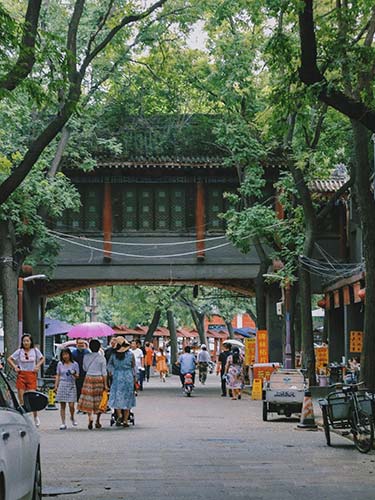

Near the South Gate Wall is a tall pagoda with ancient charm, which is the Shuyuan Gate. The pedestrian street from the Shuyuan Gate is dominated by antique buildings, and the ground is covered with green stone slabs. Walking along the Shuyuan gate pedestrian street during the day, the air is filled with the smell of books and scrolls. The older man writing on the street and the young man carving stamps seem to slow down the time with their concentration. In the evening, however, it turns into a food street, where you can eat many Xi’an specialities.
Situated in the pedestrian street is the Guanzhong Academy, which has a long history and was the highest school in Shaanxi during the Ming and Qing dynasties(1368-1911), and one of the four famous academies in China.
From the Shuyuan gate pedestrian street, you can walk east to the Xi’an Stelewood Museum, which is also worth visiting.
#5: Chijian Wanshou Baxian Gong / Baxian An (八仙庵)


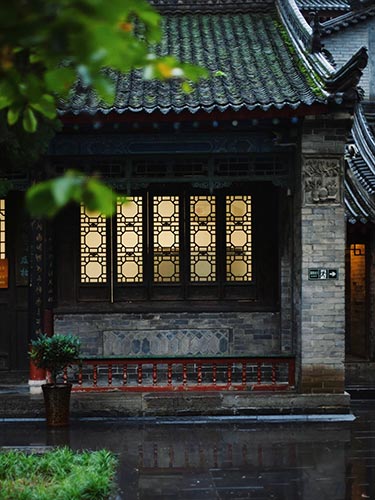
The Baxian Gong is the largest preserved Taoist temple in China. The Baxian Gong is known for its beautiful and moving legend of “Eight Immortals.” The Eight Immortals refer to the eight deities in Taoist legend. According to the Eight Immortals Palace monument, during the Song Dynasty, people often heard the sound of faint thunder underground. They built the Temple of Thunder God to suppress the strange underground appearance. Later, some people saw the eight immortals wandering and feasting in the temple. So they built a temple to worship them, called the Baxian Gong.
The existing temple buildings of the Baxian Gong are preserved in the style of the Ming and Qing Dynasties, with a simple style, compact layout, majestic and solemn, elegant courtyard, beautiful environment, exotic flowers and plants, and ancient trees.
Address: No.12, Beihuo Lane, Changlefang, Beilin District, Xi’an
Opening hours: 8:00-18:00
#6: Huajue Lane(化觉巷)



Hwajue Lane is located on Huimin Street and has four alleys of different directions and widths, making it one of the largest lanes in Xi’an Huifang. A section of the alley has been transformed into a street of tourist souvenirs. Each store follows the rule of “the most stuff in the smallest area.” The shops are full of merchandise.
Famous attractions around Xi’an
#7: Famen Temple (法门寺)



Jiang Xun, a famous Chinese literary figure, once said, “Tang culture is like a short ferry vacation, a camping trip for Chinese Han culture. One does not camp forever, but eventually one has to come back and follow the agricultural theory in peace. Why do we particularly like the Tang Dynasty (618-907)? Because it will feel like the best days of the year in retrospect were the days when you went camping and on vacation, and the Tang Dynasty was a short getaway.”
And the ‘Famen Temple’ hides a microcosm of the prosperity of the Tang Dynasty. It was the first museum in China to feature the treasures of the Tang Palace and Buddhist artworks in its collection.
It was during the renovation of Famen Temple in 1987 that the underground palace of the Tang Dynasty was discovered, and more than 2,000 treasures in the underground palace finally came back to light after more than a thousand years.
Address: Fufeng County, Baoji City, Shaanxi Province (120km to Xi’an)
Opening hours: 8:30-17:30
#8: Chenlu Ancient Town (陈炉古镇)
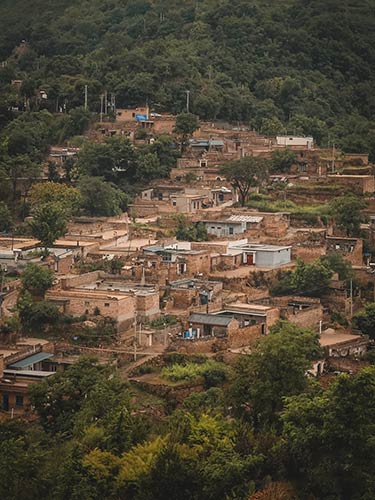


Chenlu Ancient Town is the only site where ceramics were still made after the Song Dynasty (960-1279), and the fires of the kilns have not been extinguished for more than 1,000 years. It is a miracle in the history of ceramics and is known as the “Ancient Ceramic Town of the East.”
The town was built on a mountain. And almost all the roads, bridges, roofs, and walls were constructed with ceramics or piled up. Visitors can enjoy the traditional charm of the town by walking along the ancient paths, admiring the carved beams in front of the old houses, or walking into one of the kilns that still have burning fires. It is recommended to try firing a piece of your own Yaozhou kiln work under the guidance of villagers.
Address: Yintai District, Tongchuan, Shaanxi (114km to Xi’an)



